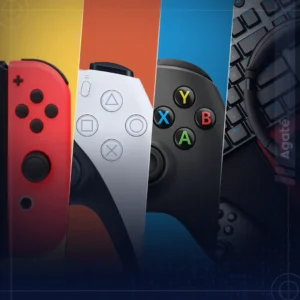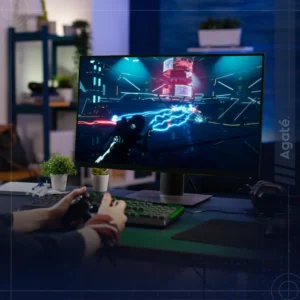For those who are wondering, are there any trends that players prefer when it comes to the models or graphics? The answer is yes, surprisingly enough. The gaming industry has evolved rapidly over the years, and of course, 3D game models have played a significant role in the growth of this industry. When you look back at the first-ever 3D game, it represents so much of the potential of the game industry and has become a critical aspect of game development. And now, it has made gaming more realistic and immersive than ever before. As we move forward, it is essential to explore the latest trends and predictions for 3D game models in the gaming industry.
Realism is Key
Technology has had a tremendous impact on the gaming industry, with advances in 3D modeling driving a never-ending demand for realistic gaming experiences. From its low-poly years until now, game developers have strived to create better 3D game models that accurately mimic real-life characters and environments. This growing demand is critical for both gamers and developers, as it drives innovation in the industry.
As gamers become more sophisticated, they demand games that provide an immersive experience that accurately simulates real-life environments and characters. It has even become common knowledge within the gaming community that high-quality graphics and hardware are critical components in achieving an immersive gaming experience. As such, gamers often engage in conversations about which games have the best graphics and which consoles or hardware provide the best output.
The demand for immersive gaming experiences has driven game developers to push the limits in terms of graphics and hardware. This has led to the development of cutting-edge technology, such as ray tracing, which has enabled developers to create more detailed and realistic environments and characters than ever before. With the introduction of new hardware, such as the latest graphics cards and next-gen consoles, gamers are now able to enjoy even more immersive and visually stunning gaming experiences.
As gamers’ expectations continue to evolve, game developers must keep pace with the latest trends and technologies to remain competitive. We can expect the demand for high-quality graphics and hardware to remain a driving force in the gaming industry, pushing developers to create ever-more-realistic and immersive gaming experiences for players to enjoy.
Cartoon vs. Manga vs. Realistic
Trends in Mobile Game Graphics and Technology
As we mentioned previously, realism is often at the forefront of conversations about graphics in console games. However, the mobile gaming industry has made a significant impact on the gaming community in recent years, particularly during the COVID-19 pandemic. With more people staying indoors, the popularity of mobile gaming continues to skyrocket, making it an important market for game developers to consider.
When developing concepts for mobile games, it is crucial to understand the latest market trends. In terms of art styles, the US market is divided almost evenly between realistic and cartoony game styles. However, game developers must also consider other factors, such as gameplay mechanics and user experience, to ensure their games stand out in a crowded market.
When it comes to mobile games, art style plays a critical role in user engagement. According to retrostylegames, casual and hyper-casual games typically feature cartoon art styles, whereas mid-core games tend to use realistic 3D art styles. In Japan and China, 2D manga art styles are prevalent, accounting for nearly half of the market. On the other hand, 3D graphics are the preferred choice for users in the US and Europe. Understanding these market trends can help game developers create games that appeal to their target audience and drive user engagement.
3D Scanning Technology
Not too far into the future, we will soon witness a revolution in the gaming industry! As the 3D scanning technology advances, we might finally say goodbye to the tedious and time-consuming manual digital sculpting. With every passing year, LiDAR scanning technology is becoming more refined.
Thanks to softwares like Polycam, we can already have a pretty seamless conversion of everyday objects into digital 3D assets, and we can only imagine the possibilities that lie ahead as this technology continues to evolve. With 3D scanning technology, game developers can create highly realistic 3D game models by scanning real-life objects and environments. This has the potential to completely transform the way game models are created, enabling a more accurate representation of real-life objects and environments in games.
As you can see, the benefits of this technology are vast, including significant time and resource savings for developers. As technology continues to advance, we can expect to see even more exciting possibilities emerging in the technology of 3D scanning itself for the gaming industry.
User-Generated Content Will Become More Popular
User-generated content is becoming more popular in the gaming industry, and it is predicted that this trend will continue to grow. Today, there are quite a lot of user-generated content games, User-generated content is an important component of both games since it allows users to create and share their own unique experiences within the game environment.
As you have probably noticed for quite some time, there is an extensively large market for those types of games, especially among the younger generation. And with the use of 3D scanning, as previously mentioned, new and upcoming UGC games will be expected to allow players to create their own custom 3D models, characters, and environments that they can play and share with other players. This allows for a more diverse range of content in games and provides gamers with a greater level of creative control over their gaming experience.
AI-generated 3D Models
Recent breakthroughs in artificial intelligence (AI) in the moving-image field have been driven by competition between open-source and private models, according to Andrew Kim, a research associate at ARK Invest. Google Research and UC Berkeley have recently published research on their new text-to-3D model, DreamFusion, the same day Meta releases Make-a-Video Model. DreamFusion uses Imagen and a Neural Radiance Field to generate 2D images from different angles and construct 3D assets for computer graphics software. This technology has the potential to significantly impact video game development, user-generated content, and in-game advertising. Kim estimates that global gaming software and services revenues could reach $200 billion, and the commercialization of AI text-to-3D models could dramatically lower the costs of video game design and development. As a result, ARK Invest recommends investing in the ARK Autonomous Technology & Robotics ETF (ARKQ) for exposure to the AI industry.
Not only that, recently NVIDIA is accelerating the development of 3D worlds and the metaverse using generative AI. The company has launched several AI research technologies to Omniverse, such as Lumirithmic and GET3D. Lumirithmic generates 3D mesh for heads from facial scans, and Elevate3D, that generates photorealistic 3D visualizations of products from 360° video recordings. These technologies are available as both third-party Connectors from NVIDIA partners and internal AI projects published by the NVIDIA research team as extensions in AI ToyBox.
On the other hand, GET3D generates 3D shapes with topology, rich geometric details, and textures from data like 2D images, text, and numbers. This technology will be available in Omniverse AI ToyBox along with existing generative AI research projects published by NVIDIA, such as GANVerse3D Image2Car and AI Animal Explorer. AI ToyBox is a platform that houses all the latest NVIDIA AI projects, empowering content creators to explore new possibilities in virtual worlds.







